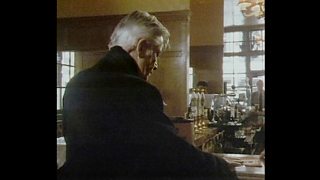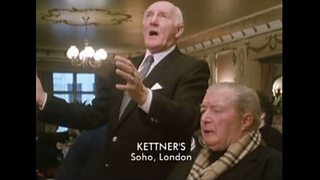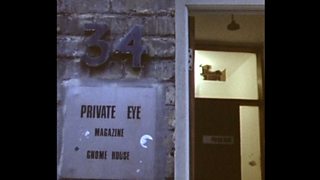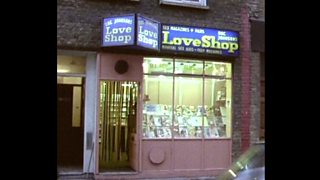The Disneyland, Treasure Island that is Soho
Soho, fun-loving and never quiet, attracts a wide mix of people. The heart of London’s West End has a history as rich as our archive and its streets, pubs, offices and sex shops, form the backdrop to several Arena films.
In Night and Day (1987, directed by Gerry Pomeroy) we watch writer Jeffrey Bernard at home and visiting his favourite Soho haunts. Bernard talks about his life as a columnist for some of London’s daily papers, before making his way out onto the streets of Soho. He describes his favourite public house, The Coach and Horses, as a sanctuary for the working residents of Soho: a place so important to its regulars and to Bernard himself that if you were to arrive any later than opening time at 11am, you were effectively late for work.

Next we meet with Frank Norman and a few of Bernard’s friends for lunch at Kettner’s, a 1930s styled brasserie, founded in 1867 and closing its doors as a restaurant today - 30th January 2016. Bernard joined Norman in creating a book called Soho - Night and Day. They wandered around the streets of Soho, having hospitality heaped upon them by the many publicans and restaurateurs who wanted to appear in the book.

Kettner's restaurant, Soho

One of the world’s most famous Jazz clubs, a venue that has hosted the likes of Glenn Miller, Linda Lewis and Paul Rodgers, is Ronnie Scott’s, the setting for our 2012 film, Sonny Rollins ’74 Rescued. This film, as you can tell from the title, was originally recorded in 1974, and sees Sonny Rollins performing alongside some of his friends to a large audience. The footage was discovered in a loft in a very poor state, rescued by Arena and broadcast in almost its original beauty in 2012. The film evokes the ambience of the famous jazz lounge, bringing a bit of Ronnie Scott’s to a living room near you.
In Arena’s film, The Art of the Radio Times and the Eye of the Eye (directed by David Wheatley and Anne James in 1981), the staff of the famous, and sometimes controversial magazine, Private Eye, talk the audience through the history of the magazine. The Eye's co-founder and second editor Richard Ingrams also reflects on the importance of the magazine's location. In 1981 the office was situated above one of Soho’s many sex shops. Ingrams suggests that Private Eye’s seedy offices helped to keep the magazine rooted in the real world: the exciting squalor of Soho over the staid, elite political world of Westminster.

Soho is a place that Arena has been lucky enough to film over the years, and is a place with many more stories to come, though these stories might perhaps relate less to sex shops, pubs and satire, and more to luxury housing developments...
